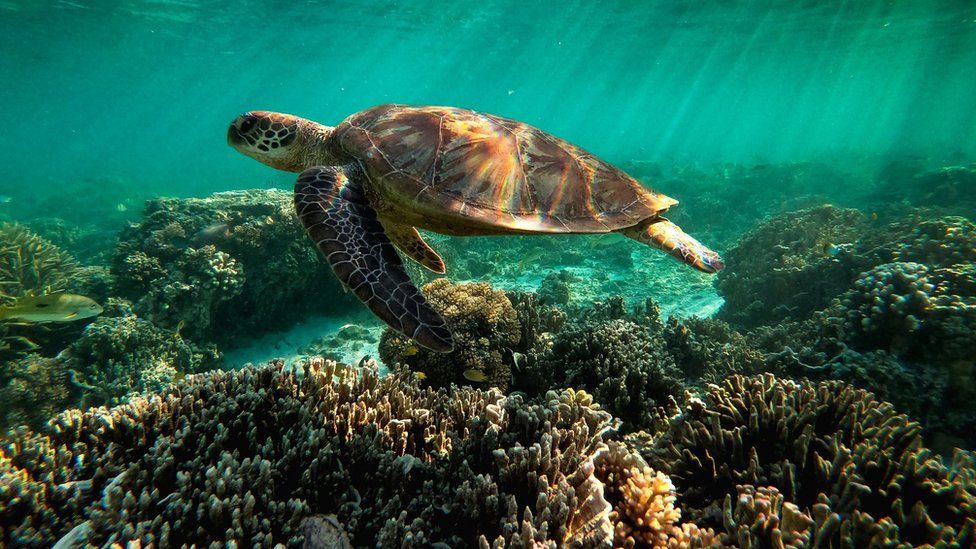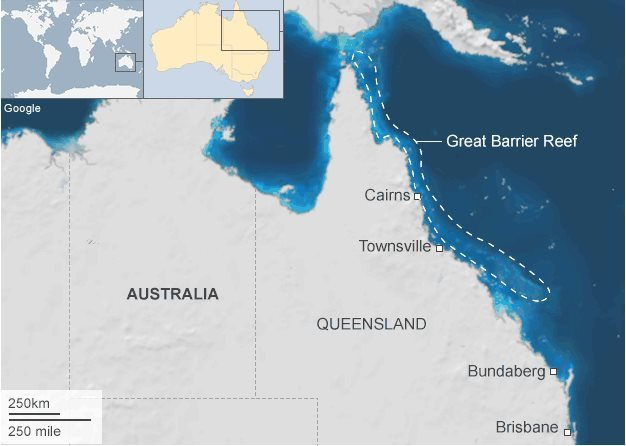The Great Barrier Reef has not been added to the Unesco list of World Heritage Sites that are "in danger", following strong lobbying from Australia.
A report from Unesco, the UN's scientific and cultural body, had said that not enough was being done to protect the reef from climate change or to meet water quality targets.
But Unesco's World Heritage Committee has decided to give Australia more time.
Australia says it has committed more than A$3bn (£1.bn; $2.2bn) to improving the reef's health.
The reef - one of the world's natural wonders - is among Australia's most beloved tourist landmarks.
But recent mass bleachings of coral and other problems have accelerated its deterioration.
What is the reef and why is it so special?
The Great Barrier Reef has been World Heritage-listed for 40 years due to its "enormous scientific and intrinsic importance".
Stretching over 2,300km (1,400 miles) off Australia's north-east coast, it is actually made up of about 3,000 individual reefs.
It is one of the most biodiverse ecosystems in the world - marine and plant life teems within the coral structures.
For decades, scientists have been struck by the reef's rich variety and beauty.

It's home to over 400 types of coral, about 1,500 species of fish, and endangered creatures like the large green turtle.
As an ocean structure, it also offers coastal protection against big waves and storms.
Why is it at risk?
Global warming has already led to the reef losing half its coral since 1995.
Larger, branching coral types - habitats for a range of sea life - were especially harmed.
Coral polyps - which form the backbone of the reef - are highly sensitive to sea temperatures. They can die if waters get too warm.
And in the past five years alone, the reef has suffered three mass bleaching events.
This is when under-stress corals expel the algae living within them that gives them colour and life. The corals then turn white - a process known as bleaching.

Climate change also causes ocean acidification and reef erosion.
If cooler waters return, it is possible for reefs to make a comeback. Recovery takes at least 10-15 years.
But scientists warn the Great Barrier Reef is on the brink of breaking down.
A study found that following bleaching events in 2016 and 2017, there weren't enough adult corals left to regenerate the worst-hit areas properly.
In 2019, Australia downgraded the reef's long-term outlook to "very poor".
The Great Barrier Reef Marine Park Authority has said climate change remains the greatest threat.
What are other threats?
Human activities such as coastal development and agricultural pollutants have also challenged the reef's health for many years.
Sediment, nitrogen and pesticide from nearby farms have flown into the reef, reducing water quality and encouraging algae growth.
Illegal fishing and even tourists damaging coral while out on trips are also problems.


The crown-of-thorns starfish - a natural predator of corals - has been a huge issue too.
With less sea life around, the species has thrived. A single starfish can wipe out large areas.
What has been done to help protect the reef?
Following the 2016/2017 bleachings, Australia's government pledged a rescue package worth A$500m ($370m; £270m).
Measures included efforts to kill crown-of-thorns starfish and paying farmers to reduce their agricultural run-off.
But critics said this package did nothing to address the main threat of climate change.
What needs to be done?
Experts warn the only way to save the reef is by urgently cutting greenhouse gas emissions.
The UN says even if the world contains global warming to a 1.5C rise, 90% of the world's corals will still die.
Global temperatures have already risen by about 1C since pre-industrial times.
Scientists say humans have to move away from using fossil fuels.
Though Australia points out climate change is a global issue, critics say its government is dragging its heels.
As one of the world's largest fossil fuel exporters, Australia continues to champion the use of coal, gas and oil. It lobbied against Unesco listing the reef as "in danger".
And Queensland - the reef's home - has one of the world's most intensive coal-mining industries.
Australia has pledged a 2030 emissions goal of a 26% cut on 2005 levels, but the UN says it's not on track to meet that.
Australia has so far also resisted pressure to commit to a net zero emissions target by 2050 - despite the US, UK, and many European and Asian nations doing so.
Reporting by the BBC's Frances Mao
https://news.google.com/__i/rss/rd/articles/CBMiMWh0dHBzOi8vd3d3LmJiYy5jb20vbmV3cy93b3JsZC1hdXN0cmFsaWEtNTc5Mzg4NTjSATVodHRwczovL3d3dy5iYmMuY29tL25ld3Mvd29ybGQtYXVzdHJhbGlhLTU3OTM4ODU4LmFtcA?oc=5
2021-07-23 11:27:07Z
52781743775976
Bagikan Berita Ini














0 Response to "Why is the Great Barrier Reef in trouble? A simple guide - BBC News"
Post a Comment